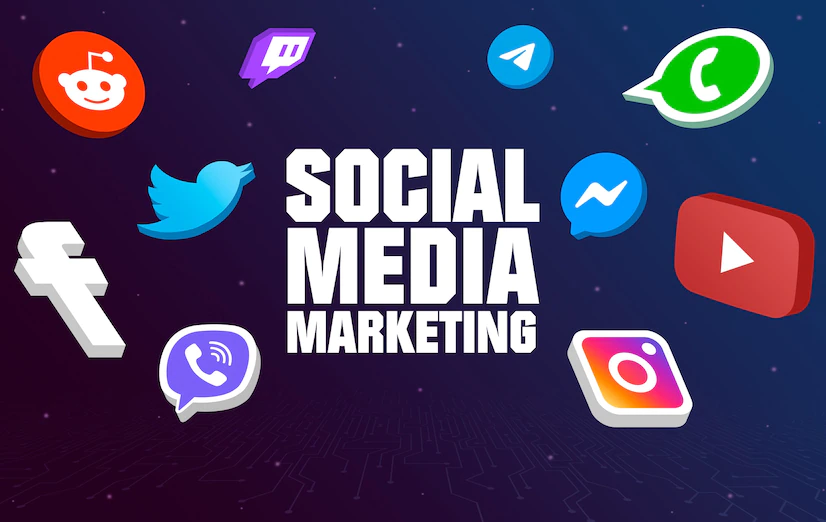Is Drupal the right CMS for your B2B website? Here’s how to decide
Jun 23, 2025

Jun 23, 2025

Jun 23, 2025

Jun 22, 2025

Jun 20, 2025

Jun 20, 2025

Jun 19, 2025

Jun 18, 2025

Jun 18, 2025
Sorry, but nothing matched your search "". Please try again with some different keywords.


As a content marketing professional and an official Instagram addict, I have no shame in admitting that I am obsessed with social media.
A decade ago, there was no concept of a social media strategy. People were sort of having fun – interacting with their target demographics wasn’t a priority.
Things are looking absolutely different at the moment. With social media as one of the important marketing channels for any business strategy to function. By October 2024, there were 5.22 billion users on social media across the globe – this equates to 63.8% of the total world population1.
So, choosing not to promote your business on social media is stupid – I mean everyone out there is on social media using it for some reason or the other. Then why not you? Yes, you could hire an agency and give them the job – or you could make the most of my social media cheat sheet for free.
| A well-defined social media strategy has 3 primary benefits: ‣ Boosts engagement and brand awareness. ‣ Supports performance measurement. ‣ Drives revenue. |
This article outlines eight tips for improving your social media marketing strategy.
| How to Create A Social Media Strategy? Here’s my 6-step process to create a well-defined social media strategy: ‣ Set specific goals and KPIs (Key Performance Indicators). ‣ Research your audience demographics and choose your network. ‣ Create timely and interactive content for all platforms. ‣ Leverage social media marketing tools. ‣ Make the most of relevant hashtags. ‣ Evaluate and boost your social media marketing metrics. |

Not setting specific goals is one of the biggest mistakes you can make when implementing your social media strategy, mainly if you’re looking for business growth. It also will mean a waste of time and resources. Set targeted social media marketing goals and develop a clear strategy to help achieve them. Setting clear, specific goals lets you get the most out of your marketing efforts.
Building brand awareness, increasing engagement, generating leads, driving more web traffic, providing better social customer service, growing revenue, and increasing press mentions are some social media marketing goals you can set. With the help of a guide to social media advertising, you can learn more about the objectives an effective strategy can help you achieve.

Your target audience should be a group of people more likely to be interested in your brand. Identifying them helps ensure more effective advertising and that your marketing time and resources are spent on a relevant consumer group.
Knowing your target market enables you to build a brand voice they resonate with. Also, marketing to a highly targeted audience helps you develop messaging they can identify with, making it easier to connect with your target audience and earn their trust.
Your current customers are the perfect example of your target audience, so survey them to get valuable insights. You can also create buyer persons to know your audience better. So, find out where they hang out most often to enable you to prioritize the platforms to focus on.
In addition, research your competitors to determine the voice they use, who they appeal to, the channels they are active on, their top followers, engagement rate, and hashtags.

For your social media marketing strategy to succeed, you must use the right social channels. When choosing a social media platform, consider your strategic objectives. For instance, to increase brand awareness via social media, consider channels with a huge audience to target a broader range of potential customers.
Know where your audience interacts online because they can’t be active on every channel. For example, Instagram wouldn’t be ideal if your largest customer segment is older (70 years plus). In addition, consider the channels your competitors are using, the content you’ll be sharing, and the number of channels you can manage.

With the right social media marketing tools, you can automate your marketing tasks to focus on more creative activities, save time, and develop improved relationships with your audience.
Some of the tools you can leverage include:

Hashtags are a crucial element for your social media marketing strategy because they’re an excellent way to label and find niche content, make your content easy to discover, enable social media users to locate and engage with content relating to common interests or themes and propel your content to get to more people.
Hashtags expand content reach and engagement. This means they can help you increase traffic on your social channels. To get the most out of social media hashtags, keep them relevant and simple, leverage trending hashtags, don’t overuse them, research them before using them, build brand engagement, and be unique and specific.

Video offers high engagement in all social media channels as it’s an appealing and interactive way to grab your target audience’s attention while pushing your content.
However, live streaming is a game-changer in the social media marketing world. Live videos enable you to connect with your followers more intimately because they interact with your brand in real-time, creating seamless loyalty and trust between your business and consumers.
Live streaming enables you to attract a large audience, generate more traffic, and increase visibility. It can also help you determine the kind of content your audience needs while ensuring immediate communication and making your interactions more memorable.

Content consistency is a key contributor to your business’s success and the development of meaningful relationships with your audience. While inconsistent with your content creates confusion among your customers and prospects, consistency improves customer experience and builds reputation, brand trust, and credibility.
Maintaining content consistency helps you connect with your audience fully while hitting all the essential touchpoints. To ensure content consistency, select and stick to a schedule.

Tracking your social media metrics lets you determine your strategy’s effectiveness, including what’s working for you and what isn’t. This helps identify where to focus your energy and resources and what to drop.
Moreover, measuring your social media performance helps you know the channels to concentrate on and see where your customers and leads are from to find ways to interact more.
Reach, audience growth rate, impressions, engagement rate, video views, customer satisfaction score, and click-through rate are some social media metrics to track.
Spoiler Alert: nothing is FINAL.
Social media evolves fast – with new networks, trends, and tools emerging, others often go through more than one demographic shift.
Similarly, your business goes through different periods of transition. Don’t get scared – it just means that your strategy is a living document that reviews and adjusts as required. In addition, you can keep referring to it and stay on track – but don’t back out from making changes.
That way, you will be able to make changes to your strategy as and when required so that it can reflect your plans, marketing tools, and new goals.
Read Also:
Barsha is a seasoned digital marketing writer with a focus on SEO, content marketing, and conversion-driven copy. With 7 years of experience in crafting high-performing content for startups, agencies, and established brands, Barsha brings strategic insight and storytelling together to drive online growth. When not writing, Barsha spends time obsessing over conspiracy theories, the latest Google algorithm changes, and content trends.
View all Posts
Is Drupal the right CMS for your B2B website?...
Jun 23, 2025
How To Get Yellow Heart Snapchat Emojis? A Co...
Jun 23, 2025
150+ Video Submission Sites To Work With In 2...
Jun 22, 2025
What Are The Best Shopify Alternatives In 202...
Jun 20, 2025
What Is The Primary Advantage Of Using Genera...
Jun 20, 2025
